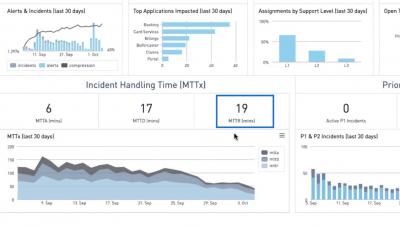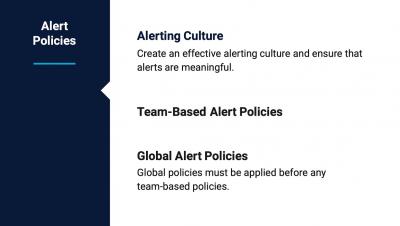Operations | Monitoring | ITSM | DevOps | Cloud
Alerting
Service Monitoring and You
Monitoring is an art form. That sounds cheesy and lazy, but the right kind of monitoring is very context-dependent and rarely does the same practice work across multiple pieces of software or people. This gets even harder when you think about modern software architectures. Microservices? Container schedulers? Autoscaling groups? Serverless? ${New-technology-that-will-solve-all-of-my-problems-but-probably-creates-other-problems}?
Tips for modern NOCs - simplifying IT operations team reporting
The dreaded monthly operations and application meeting is edging near. You know which meeting we’re talking about: the one where all the Ops teams get together to talk about what they are seeing, about application enhancements and modifications, potential improvements, and often – about their frustrations!
Tips for Modern NOCs - Simplifying IT Operations Team Reporting
How to Use Opsgenie Alert Policies
Happy National Cybersecurity Awareness Month!
October is the month of spooky scares, so it makes sense that National Cybersecurity Awareness Month is also recognized at this time—after all, what’s more scary than, for example, having someone phish for your personal information and using said info to ruin your credit or losing your password to hackers so they have access to your bank account?
What happens when we combine AIOPS with IT Automation?
Modernizing Your Digital Operations with Sumo Logic and PagerDuty
As digital transformation continues to be central to an organization’s growth mandate, it’s critical to ensure that customer-facing, revenue-generating, mission-critical applications are operationally reliable and secure. That’s where Sumo Logic comes in—for almost 10 years, we have been providing a Continuous Intelligence platform for DevSecOps that’s utilized by over 2000+ customers in almost every vertical.
The Pragmatic Buyer's Guide to AIOps Platforms
It’s been said hundreds of times: in the digital era, customers tolerate no downtime. IT operations teams must keep systems running 24x7x365, as the price of downtime is steep. According to Gartner, in 2014, organizations lost $5,600 per minute of downtime, which worked out to well over $300,000 per hour. Today, it’s likely higher, as organizations increasingly rely on technology to power revenue-generating business services.
Announcing Runbooks
Since the beginning, we’ve wanted to make it faster, easier, and even a joy to respond to incidents. We’ve had the typical components of incident response for a while, but orchestrating them together was a manual task by our users. Today we’re marrying together all the features already available in our incident response tool into our newest release: Runbooks.











